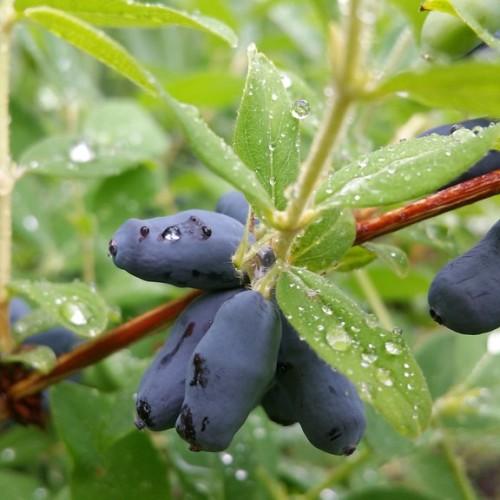
honeyberry
Lonicera caerulea var. edulis
Cycle:
Perennial
Watering:
Average
Hardiness Zone:
2 - 7
Flowers:
Flowers
Sun:
Full sun,part shade
Fruits:
Fruits Ready In Summer
Edible:
Yes
Leaf:
Yes
Growth Rate:
High
Maintenance:
Low
Drought Tolerant:
Yes
Care Level:
Moderate
watering
Honeyberry plants should be watered deeply every 7-10 days during the hot summer months. During cooler weather, water less frequently. The soil should be kept moist but not saturated; you can test the moisture by pressing a finger into the soil. If the soil does not stick to your finger, the plant needs to be watered. make sure to water the soil around the base of the plant, avoiding the leaves. Be careful not to overwater your honeyberry plants. Too much water can cause the leaves and roots to die.
sunlight
Honeyberry plants need full sun to partial shade to thrive. During the growing season, they require 4-6 hours of sunlight each day. They prefer as much sun as possible from mid-morning to mid-afternoon, so this is the ideal time for sunlight exposure. In the winter months, direct sunlight should be avoided as too much sunlight can cause the plant's leaves to burn. It's best to give honeyberry plants a south, east or west exposure for maximum sun exposure during the growing season, but avoid a west or south exposure in the winter.
pruning
The exact timing and amount of pruning depends on the size and type of honeyberry (Lonicera caerulea var. edulis) plant, however, as a general rule of thumb, an annual pruning is recommended. For small plants, pruning may begin in the early spring when dormancy is broken, and continue through early summer. Where flower buds have already developed, this should be done just after flowering. The main goal of pruning should be to encourage healthy growth by thinning out old, congested and diseased branches, as well as removing any branches that cross each other or grow outward instead of skyward. To ensure a good harvest, it is recommended to thin out congested shoots, as well as branches that grow downward and inward, allowing enough space between each branch to let light and air in. To keep plants compact and prevent spreading, hard pruning may be done in winter. Prune damaged, diseased and weak shoots, as well as side shoots growing below the lower bud.
